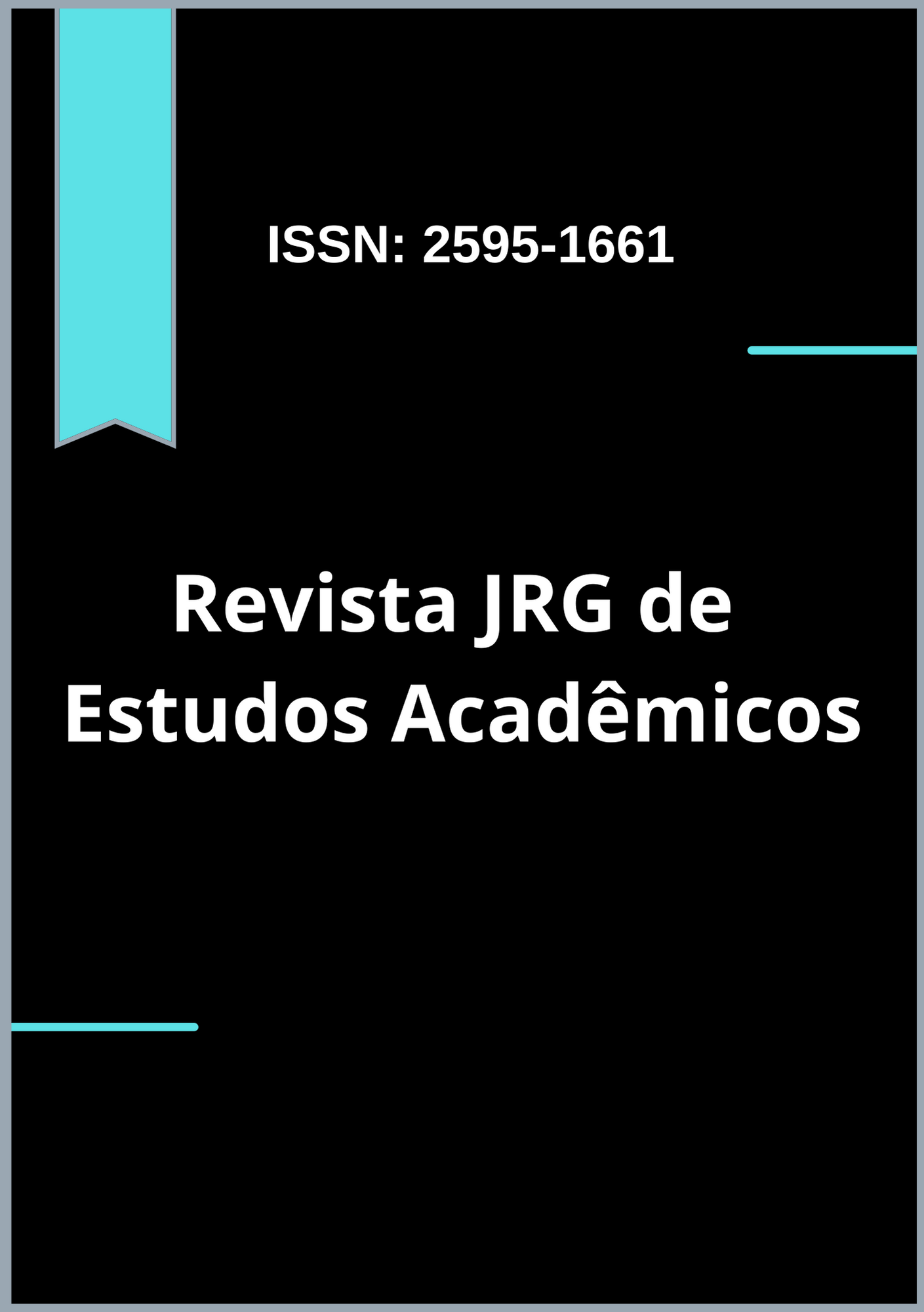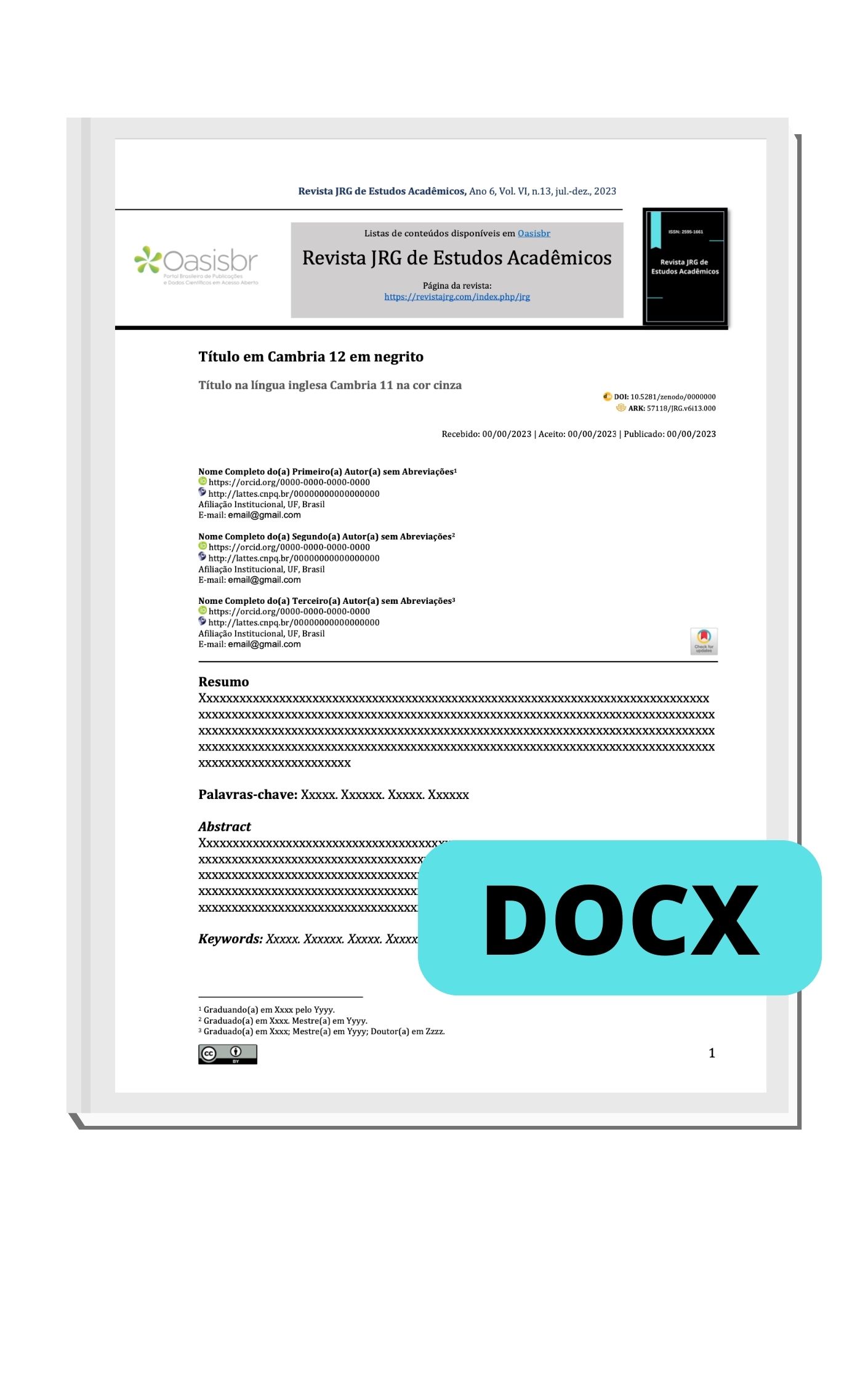Nutritional and sociodemographic profile of elderly patients with dementia hospitalized in a specialized palliative care unit
DOI:
https://doi.org/10.55892/jrg.v8i18.1875Keywords:
Nutritional assessment, palliative care, dementia, malnutrition, food intakeAbstract
Introduction: There has been an increase in dementia syndromes, which are among the most disabling in the elderly. The palliative care approach becomes imperative, as it aims to improve the quality of life of patients/families with a serious disease that threatens the continuity of life. This study aimed to describe the nutritional and sociodemographic profile of elderly patients with dementia hospitalized in a specialized palliative care unit and to correlate the nutritional profile of patients with clinical outcome. Methods: Cross-sectional, prospective and analytical study, with a sample of 46 elderly patients with dementia and age ≥ 60 years, admitted to a hospital specialized in palliative care. The sample characterization data, nutritional aspects, functionality scales (PPS and FAST), clinical outcome and length of hospitalization were analyzed. Results: The majority were female (52.17%), aged > 80 years (78.26%), with the most frequent etiologies being Alzheimer's dementia (28.26%) and FAST 7 (78.7%). The most common nutritional diagnosis was severe malnutrition (47.82%), followed by moderate malnutrition (43.48%). The most prevalent feeding route was enteral (47.83%), followed by oral (41%). Of the participants, 86.96% died during the study. Malnutrition was not related to death (p=0.347); however, there was a correlation between the prescribed enteral volume (p=0.031) and the outcome of death, so that smaller volumes were more frequent in patients with this outcome. Conclusion: The prevalence of malnutrition in 91.3% of the sample stands out, as well as a significant correlation between the lowest volume of enteral diet and death. There is a lack of knowledge on the part of health professionals regarding the appropriate indication of the feeding route for these patients, given the high prevalence of enteral nutrition, originating from units that are not specialized in palliative care.
Downloads
References
ALVES, J. T. M. et al. Diretriz BRASPEN de Terapia Nutricional no Paciente com Doenças Neurodegenerativas. Braspen Journal, São Paulo, v. 37, n. 2, p. 2-34, jul. 2022. DOI: 10.37111/braspenj.diretrizNEURO2022.
BAIK, D.; RUSSELL, D.; JORDAN, L.; DOOLEY, F.; BOWLES, K. H.; MASTERSON, C. R. M. Using the Palliative Performance Scale to Estimate Survival for Patients at the End of Life: A Systematic Review of the Literature. Journal of palliative medicine, [s.l.] 21(11), 1651–1661. 2018. https://doi.org/10.1089/jpm.2018.0141
BRASIL. Lei 10.741 - Dispõe sobre o estatuto do idoso e dá outras providências. Brasília, DF: Imprensa Nacional, Diário Oficial da União, 2003. Disponível em: [https://www.planalto.gov.br/ccivil_03/leis/2003/l10.741.htm] Acesso em: 13/11/23.
BUITRAGO, A.F.S.; PERDOMO, D.C.; BOGOTAC, M.A.M.; Asociación entre el deterioro cognitivo y factores socioeconómicos y sociodemográficos en adultos mayores colombianos. Revista colombiana de psiquiatría. [s.l] 53(2):134–141, 2024. Disponível em: [http://www.scielo.org.co/pdf/rcp/v53n2/0034-7450-rcp-53-02-134.pdf] Acesso em: 12/01/2025.
CAO, Q.; TAN, C.C.; XU, W. et al. The Prevalence of Dementia: A Systematic Review and Meta-Analysis. Journal of Alzheimer’s Disease, 2019. DOI: 10.3233/JAD-191092.
CASTILHO, R. K.; et al. Manual de cuidados paliativos da Academia Nacional de Cuidados Paliativos (ANCP). 3 ed. Atheneu, Rio de Janeiro, 2021.
CHEN, C.L. et al. Constipation and Its Associated Factors among Patients with Dementia. International Journal of Environmental Research and Public Health, v. 17, n. 23, p. 9006, 3 dez. 2020.
D’ALESSANDRO, M.P.S.; BARBOSA, L.C.; ANAGUSKO, S.S. et al. Manual de cuidados paliativos. São Paulo: Hospital Sírio-Libanês; Ministério da Saúde, 2 ed. 2023.
DAVIES, N.; BARRADO-MARTIN, Y.; VICKERSTAFF, V. et al. et al. Enteral tube feeding for people with severe dementia. Cochrane Database of Systematic Reviews, 2021. Issue 8. Art. No.: CD013503. DOI:10.1002/14651858.CD013503.pub2.
DIXON, T; SHAW, M; FRANKEL, S; et al. Hospital admissions, age, and death: retrospective cohort study. BMJ. 2004. DOI: 10.1136/bmj.38072.481933.EE.
GARRE OLMO, J. Epidemiología de la enfermedad de Alzheimer y otras demencias. Revista de Neurología, v. 66, n. 11, p. 377, 2018. DOI: 10.33588/rn.6611.2017519.
GONÇALVES, T. S.; OLIVEIRA, L.C.; COSTA, M.F.; SILVA, A.R.B. Alimentação e Nutrição em Cuidados Paliativos. Academia Nacional de Cuidados Paliativos. São Paulo, 2024.
HARVEY, L.; MITCHELL, R.; BRODATY, H; et al. The influence of dementia on injury-related hospitalisations and outcomes in older adults. Injury, 2016. DOI: 10.1016/j.injury.2015.09.021.
IJAOPO, E. O.; IJAOPO, R. O. Tube Feeding in Individuals with Advanced Dementia: A Review of Its Burdens and Perceived Benefits. Journal of Aging Research, v. 2019, n. 1, p. 1–16.
JAMESON,J. L. et al. Medicina interna de Harrison. 20. ed. Porto Alegre: AMGH. 2 v. 2020.
LASSEL, R. K. F.; MOREINES, L.T.; LUEBKE, M.R; et al. Hospice interventions for persons living with dementia, family members and clinicians: A systematic review. Journal of the American Geriatrics Society. vol 70, 7. 2022. DOI:10.1111/jgs.17802.
MINAGLIA, C; GIANNOTTI, C; BOCARDDI, V; et al. Cachexia and advanced dementia. Journal of Cachexia, Sarcopenia and Muscle, 22 February, 2019. DOI: 10.1002/jcsm.12380.
MINISTÉRIO DA SAÚDE; Relatório nacional sobre a demência: Epidemiologia, (re)conhecimento e projeções futuras [recurso eletrônico]. 1 ed. Editora MS, Secretaria de Atenção Primária à Saúde, Departamento de Gestão do Cuidado Integral. Brasília, Distrito Federal, 2024. Disponível em: [http://bvsms.saude.gov.br/bvs/publicacoes/relatorio_nacional_demencia_brasil.pdf] Acesso em: 01/02/2025.
MITCHELL, S.L.; TENO, J.M.; KIELY, D.K; et al. The Clinical Course of Advanced Dementia. New England Journal of Medicine, v. 361, n. 16, p. 1529–1538, 15 out. 2009. DOI:10.1056/NEJMoa0902234.
OLIVEIRA, D. JUN OTUYAMA, L; MABUNDA, D; et al. Reducing the Number of People with Dementia Through Primary Prevention in Mozambique, Brazil, and Portugal: An Analysis of Population-Based Data. Journal Of Alzheimer's Disease, [s.l.], p.1-9, 12 jan. 2019.
ORREVALL, Y. Nutritional support at the end of life. Nutrition, v. 31, n. 4, p. 615–616, abr. 2015.
PERRY, E.; WALTON, K.; LAMBERT, K. Prevalence of Malnutrition in People with Dementia in Long-Term Care: A Systematic Review and Meta-Analysis. Nutrients 2023, 15, 2927.
PRINCE M; WIMO A; GUERCHET M; et al. World Alzheimer Report 2015, The global impact of dementia an analysis of prevalence, incidence, cost and trends. Alzheimer’s Disease International, London, August, 2015. Disponível em: [https://www.alzint.org/u/WorldAlzheimerReport2015.pdf]. Acesso em: 27/01/2024.
SAMPSON, E.L.; CANDY, B.; DAVIES, S; et al. Living and dying with advanced dementia: A prospective cohort study of symptoms, service use and care at the end of life. Palliative Medicine, v. 32, n. 3, p. 668–681, 18 set. 2017.
SCLAN, S. G.; REISBERG, B. Functional Assessment Staging (FAST) in Alzheimer’s Disease: Reliability, Validity, and Ordinality. International Psychogeriatrics, v. 4, n. 3, p. 55–69, abr. 1992.
SMID, J. et al. Declínio cognitivo subjetivo, comprometimento cognitivo leve e demência - diagnóstico sindrômico: recomendações do Departamento Científico de Neurologia Cognitiva e do Envelhecimento da Academia Brasileira de Neurologia. Dementia & Neuropsychologia, v. 16, p. 1–24, 28 nov. 2022. Disponível em: [https://doi.org/10.1590/1980-5764-DN-2022-S101PT].
VOLKERT, D. et al. ESPEN guidelines on nutrition in dementia. Clinical nutrition, Edinburgh, Scotland, v. 34, n. 6, p. 1052–1073, 2015. Disponível em: [http://dx.doi.org/10.1016/j.clnu.2015.09.004].
WEISBROD, N. Primary Palliative Care in Dementia. Neurotherapeutics, v. 19, n. 1, 26 jan. 2022. DOI: 10.1007/s13311-021-01171-x.
World Health Organization. Global status report on the public health response to dementia. 2021. Disponível em: [https://www.who.int/multi-media/details/global-status-report-on-the-public-health-response-to-dementia] Acesso em: 13/11/23.
World Health Organization. Dementia. 2023. Disponível em: [https://www.who.int/news-room/fact-sheets/detail/dementia]. Acesso em: 20/09/2023.











































